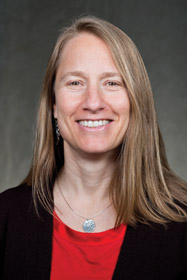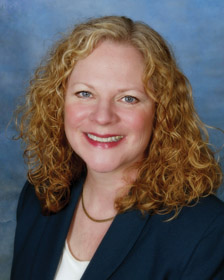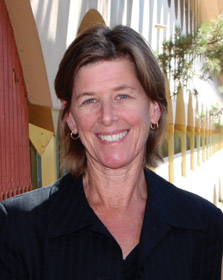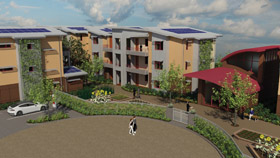NorthBay biz addresses the effect of rapidly escalating rents—including the economic fallout and what can be done to protect our workforce.
 Once upon a time, in the dark ages of the 20th century, a community was where you played, went to school, saw your friends—you know, grew up, with parents and even grandparents close by. Heads of households worked locally or commuted to a nearby city and, keeping to the formula for a stable middle class budget, spent no more than one-third of their income on housing, leaving the rest for education, food and family vacations, what we now call “lifestyle.” Those days—and that lifestyle—are, for many of the middle (or formerly middle) class, gone.
Once upon a time, in the dark ages of the 20th century, a community was where you played, went to school, saw your friends—you know, grew up, with parents and even grandparents close by. Heads of households worked locally or commuted to a nearby city and, keeping to the formula for a stable middle class budget, spent no more than one-third of their income on housing, leaving the rest for education, food and family vacations, what we now call “lifestyle.” Those days—and that lifestyle—are, for many of the middle (or formerly middle) class, gone.Today, all over the Bay Area, communities are changing. People who may have lived and worked in a neighborhood for years are suddenly finding themselves unable to stay. Employees who want to live close to their jobs must instead commute long distances. Seniors, who may no longer be able to work and keep up on their mortgages, find the waiting lists for independent housing years-long or closed. The hardcore homeless (the “under-housed,” as they’re politely called in administrative circles) may not be able to find a bed in a shelter because the demand so far outweighs the supply.
What’s going on?
 “The housing market is broken,” says Amie Fishman, executive director of Non-Profit Housing Association of Northern California. “At this point, even couples who are making two good incomes find it difficult to afford to buy a home.”
“The housing market is broken,” says Amie Fishman, executive director of Non-Profit Housing Association of Northern California. “At this point, even couples who are making two good incomes find it difficult to afford to buy a home.”“I think this is probably as tight a housing market as we’ve ever had in Marin County,” says Kate Rice, District Two Supervisor, Marin County.
“One of my colleagues said that, in his 30 years in the business, he’s never seen such high demand and such low resources to build,” says Kathleen Dreessen, executive director of Napa Valley Community Housing.
“Many, many residents have 50 percent of their income going to housing now,” says Santa Rosa City Councilmember Julie Combs. “We had about 1,200 homeless people in the area before the recession. We have about 4,000 now.”
 “Every single day, we get somebody who’s either homeless or at risk of becoming homeless in the very near future,” says Mary Stompe, executive director of PEP Housing, a nonprofit organization dedicated to providing housing for seniors. “Years ago, I’d see that maybe once every few weeks, where someone would come in needing housing or a place to live right away. But now I see that every single day.”
“Every single day, we get somebody who’s either homeless or at risk of becoming homeless in the very near future,” says Mary Stompe, executive director of PEP Housing, a nonprofit organization dedicated to providing housing for seniors. “Years ago, I’d see that maybe once every few weeks, where someone would come in needing housing or a place to live right away. But now I see that every single day.”In all three counties, as in the entire Bay Area and other desirable areas nationally, the extremes of supply (scarce) and demand (intense) are driving up home prices and tempting many landlords, both residential and commercial, to raise rents to the point where even long-time tenants are forced out. These newly evicted add to the numbers competing for the nearly nonexistent housing, which helps further increase its value.
“If you’re looking at the community as a whole,” says Rice, “it’s a concern. The pressures of supply and demand in a booming economy have created a perfect storm: Supply isn’t increasing and demand is skyrocketing.”
“The rental situation has become much worse after the recession,” says Combs. “People lost housing, incomes haven’t matched inflation, and minimum-wage jobs are no longer held predominately by teenagers. So we’ve had an economic cycle that was devastating to middle and lower-middle class people—instead of having an economy where they moved up, we had an economy with a slip-down effect.”
How bad is it?
 “In Napa, we have between 400 and 500 people on our waiting list for affordable housing at any given time,” says Dreessen. “We have people coming in who are living in their cars or couch surfing.” She says many of these people have jobs and had been living productively until something unforeseen happened—an illness, home foreclosure or simply a notice from a landlord taking advantage of the real estate boom to convert to condos, remodel or just to raise the rent to what the market will stand.
“In Napa, we have between 400 and 500 people on our waiting list for affordable housing at any given time,” says Dreessen. “We have people coming in who are living in their cars or couch surfing.” She says many of these people have jobs and had been living productively until something unforeseen happened—an illness, home foreclosure or simply a notice from a landlord taking advantage of the real estate boom to convert to condos, remodel or just to raise the rent to what the market will stand.“I understand that a lot of landlords have been doubling and tripling the rent, and if renters can’t afford that, there’s nowhere to go,” says Dreessen. “I was told there isn’t any way to have rent control here. So if the renters are given proper notice, there’s no regulation against their being told, ‘OK, now your rent isn’t $1,500 anymore; it’s $3,000.’”
The futility of waiting lists
“Our master waiting list now is 444 people,” says Stompe, “and the average wait is about two to five years.” A market rate one-bedroom apartment in Sonoma County rents for between $1,050 and $1,900 per month. “The folks we serve are mostly on Social Security and don’t make anywhere near that amount,” she says. “We’re adding at least 17 people per month to our waiting list. And every single day, we get at least one call from somebody or some agency that needs to place somebody in 30 days or less.”
 In Marin, Supervisor Rice sees the demand for all types of housing coming from several directions, including long-time renters on limited or fixed incomes being displaced when their rents are increased, to workers trying to live close to low- to mid-level jobs, to prosperous young families from tech-booming San Francisco wanting to move to Marin. For this last group, price is likely no object, “so they’re jumping on anything that comes onto the real estate market to buy. And if they can’t find something to buy, they’re renting.”
In Marin, Supervisor Rice sees the demand for all types of housing coming from several directions, including long-time renters on limited or fixed incomes being displaced when their rents are increased, to workers trying to live close to low- to mid-level jobs, to prosperous young families from tech-booming San Francisco wanting to move to Marin. For this last group, price is likely no object, “so they’re jumping on anything that comes onto the real estate market to buy. And if they can’t find something to buy, they’re renting.”Marin has about a 1 percent vacancy rate. “When your vacancy rate is that low, landlords can increase rent,” says Rice. “We’re seeing it across the board. We have something like 2,100 Section 8 [low income] housing vouchers to help qualified people pay rent, and we have about 130 to 140 families out looking for a place to rent. But there’s nothing here for them.”
“It’s really frustrating,” adds Stompe. “The need is huge. The baby boomer population will double in the next 20 years, and they want a different sort of housing; they expect more services and amenities. So it’s like a perfect storm.
“You have folks who really need housing. They didn’t think they were going to live this number of years or had something happen in their life. Instead of society putting a little more into senior housing, it was all taken away. So they live in storage units; they live in cars. If they have a dog or cat, which aren’t not allowed in homeless shelters, they may choose to stay in their car to keep their pet.”
When you think of the homeless, you may picture a muttering figure covered in steaming newspapers curled up on a grate. But the profile of today’s homeless person may include people who recently were our neighbors. They may be educated, have jobs, even have money. (See “Shelter from the Storm,” January 2015.)
While a traditional formula for stable personal finance would have a family pay no more than one-third of its income for housing, now that balance is way off. “Many, many residents spend 50 percent or more of their income on housing,” says Combs. “If you figure that another third or so goes to transportation, you don’t have much left for food, clothing and medical care. And we’re talking people who are employed. The profile of homelessness in our community has really expanded.
“About 30 percent of the people in our homeless shelters have the money to move into an affordable home if they could find one.”
Why not just build more housing?
At hearings for affordable housing projects, one often hears passionate views from residents and landowners opposing more housing. This feeling is particularly strong in slow-growth Marin, but Rice points out that taking care of community housing needs doesn’t necessarily mean despoiling the landscape or creating more sprawl.
“Creating new housing doesn’t mean you have to develop on vacant land or build something that conflicts with established and well-loved community character,” she says. “Well-designed infill development, second units and repurposing existing properties can all be part of the mix toward addressing our housing needs without compromising community character. And the discussion isn’t about creating affordable housing for people who can’t afford to live here; it’s about maintaining a housing mix that matches the natural range of incomes and housing needs existing in every community.”
“I think that, in the North Bay, people really have a lot of fear about density, traffic and about who’s moving into the neighborhood, which is why we need to do a lot of deep work with people and communities,” says Fishman. “It’s good to have a teacher be able to live in the community where he or she teaches. And it’s bad to have so many people spend so much time in their cars, producing greenhouse gases, driving to and from their jobs.”
The real problem
“It’s not that there isn’t enough land,” says Combs. “And it’s not about who’s going to do the construction. The problem isn’t whether the land is allocated or designated for affordable housing or whether there’s enough of it for affordable housing to be built. The issue is: How is it going to get built?”
“This is a particularly ominous time,” agrees Stompe. “It started with cities losing redevelopment agency funding in 2012. Then Congress didn’t fund HUD 202 programs, and we lost the floor of the 9 percent tax credit. You try to stay positive but it’s one hit after the next.
“As a developer, we look at things like this and our long waiting list and think, ‘What can I do?’ It’s frustrating. You’re trying to work with the city to get more affordable housing, but there’s this barrier.”
According to Sonoma builder Ed Nessinger, owner of NESSCO Construction, Inc., there’s no such thing as affordable housing in Sonoma County. “What we actually have is a two-class housing situation,” he says. “There are $3 million and $4 million homes and then there are apartments. It’s virtually impossible to build affordable housing right now.”
He says that with all the permits and professional fees required, it’s too expensive to build affordable housing, and what’s needed is a streamlined permitting process and eliminated (or at least reduced) bureaucracy, which now adds time and cost to every project. As it is, with a booming real estate market, there’s no incentive or profit to build affordable housing. “I don’t care who you are,” he says, “you’re not going to be able to build anything that resembles affordable housing.”
“It’s true that there’s a lot of regulation,” says Fishman. “There’s environmental review, entitlements, planning, zoning and all kinds of standards that communities have developers go through when they develop any kind of housing. And some communities use strict regulations to prohibit anything from being built.” That’s why, she says, it’s often only experienced, mission-driven, nonprofit developers who build affordable housing. They know how to navigate the layers of complexity and financing, and their business model is to meet community needs for the long-term rather than make a profit. This makes them more successful with developing and managing great affordable housing for generations.
What is affordable housing?
Everyone agrees that, in an economy where you can build a very expensive large home or market rate rentals at a healthy profit, it’s hard to entice a builder to risk time and money to build homes that low- and moderate-income people can afford. And just to be clear, housing may come on the market that just happens to be cheap—but it’ll be cheap because it’s poorly built or dilapidated, and that’s not what’s meant when planners talk about affordable housing. This is an important distinction.
 “In high-cost areas,” says Fishman, “the market doesn’t, on its own, build housing that’s affordable. The affordable housing we’re talking about is high-quality housing that’s built to last and that helps people move forward in their lives. It’s not cheap housing: That’s something very different.” She says genuine affordable housing is an asset to communities, but it’s costly and complicated, and for-profit developers often won’t touch it. It takes experienced affordable housing developers that know how to work through the maze of regulations and the layers of funding sources to get the job done.
“In high-cost areas,” says Fishman, “the market doesn’t, on its own, build housing that’s affordable. The affordable housing we’re talking about is high-quality housing that’s built to last and that helps people move forward in their lives. It’s not cheap housing: That’s something very different.” She says genuine affordable housing is an asset to communities, but it’s costly and complicated, and for-profit developers often won’t touch it. It takes experienced affordable housing developers that know how to work through the maze of regulations and the layers of funding sources to get the job done.“The biggest single obstacle, in terms of being able to build affordable housing, is litigation,” says Larry Florin, director of housing for the county of Napa. “Neighbors and other interest groups will use CEQA [the California Environmental Quality Act] as a tool to stop construction from moving forward on these projects.” He considers the reason for this to be more about demographics than aesthetics, since most affordable housing is tastefully done and well built—if anything, “over-designed.” One reason people don’t want affordable housing in their neighborhoods, he says, is that they don’t want the people who might need affordable housing in their neighborhoods, despite the fact that these are often the people who provide services to the community.
Plugging away
“As a council, we’ve really come together around issues of affordable housing and homelessness, and I’m really proud of our community for being creative in how we approach it,” says Combs. “We’re plugging away.”
The Santa Rosa City Council just went through a goal setting process for the next 18 months, she says, “and I think it’s the first time we’ve ever placed homelessness and housing at the top of the priorities list—and it is. It’s bipartisan, and we’re united in wanting to work on this. And we’re seeing our community come together to solve this problem. We’re also conducting a series of meetings to improve how we do business with developers to make sure we’re not doing something that gets in the way of affordable housing. We have four [projects] in the pipeline that are ready to go, except for finding the extra funds.” She says last year, the council moved $1 million from the city’s general fund to its affordable housing fund so it could get one of the projects going.
This planned project, called Crossroads (located on Burbank Avenue in Roseland), consists of 79 rental units aimed at the low end of the median and lower income bracket. The builder, Hugh Futrell Corporation, has worked successfully with the city on other projects, Combs says.
“This project was first proposed nine years ago, but the financing is just now starting to come into place,” says Nancy Gornowicz, economic development and housing manager for the city of Santa Rosa. She explains that the city has provided $4.2 million—$1 million, as mentioned by Combs, is additional funding from the general fund, which the council provided because of the urgent need for affordable housing. In addition, the county has provided $4.5 million and dedicated 53 of its Section 8 housing choice vouchers as project-based vouchers. This means that each household who lives in one of the 53 units will have access to rental subsidy.
To raise further funds for the $32.5 million project, Santa Rosa is now conducting studies to make sure the development impact fees (costs of water, sewer and other services) are appropriate. It’s also looking at changing the proportion of the real property transfer tax that goes to housing. Combs explains that, currently, 20 percent goes to homeless services and affordable housing, but the city is looking at increasing that to 50 to 75 percent.
“It’s a very complicated financing model,” says Gornowicz, “and it’s really challenging to put all these pieces together.” She’s not discouraged, though, and is always looking toward the successful result. “It’s great to go to a grand opening and see families be able to get into really nice housing. It’s building a community for these folks.”
Counties understand the need
“We need housing that addresses the needs of people with various incomes, including housing for seniors, people for with special needs, working families, veterans, teachers and others in the workforce. A range is what makes for a great community,” says Fishman.
Combs would like people to understand that housing community members is a benefit, not a blight.
 “We can’t give everybody a place to live who wants to live here,” says Rice. “but we can certainly do better.”
“We can’t give everybody a place to live who wants to live here,” says Rice. “but we can certainly do better.”Pablo Zatarain, interim director of Fair Housing Napa Valley, is proud of the steps his organization is taking. “We’re available to assist people with any housing-related concerns or questions. Right now, our agency is administering a Napa Valley Community Foundation grant program, in collaboration with Community Action Napa Valley, which is assisting mobile home owners whose homes suffered damage during the earthquake last summer. We’re assisting in getting repairs done, using grant funds donated to the NVCF by Napa Valley Vintners. The administration of this grant has, so far, allowed the repair and re-leveling of more than 150 homes, ad the rpogram has served nearly 700 residents.
“The problem is real,” says Florin. “It’s significant. We’re going to have to think outside the box to identify solutions collectively. Nonprofits, businesses and government are going to have to work together—there are no easy solutions.
Model Community Condos Planned for City of Napa
 In the city of Napa, a 48-unit condominium development, planned for a 2.5-acre parcel at 2614 First Street, may serve as a model for both community benefit and reasonable developer profit. Napa Creek Village will be unique in two ways, according to Bob Massaro, co-founder and CEO of Thriving Communities, LLC, the project’s managing developer.
In the city of Napa, a 48-unit condominium development, planned for a 2.5-acre parcel at 2614 First Street, may serve as a model for both community benefit and reasonable developer profit. Napa Creek Village will be unique in two ways, according to Bob Massaro, co-founder and CEO of Thriving Communities, LLC, the project’s managing developer.First, it will be “extremely green.” Fully solar powered and designed for low water consumption, it represents energy efficiency and reduced energy costs for the inhabitants as well as sustainability for the environment. The initial analysis is that it will earn LEED Platinum. The second way in which it’s unique, according to Massaro, will be the residential mix. Of the 48 units, eight will be affordable by deed restriction, funded privately by the developer. Sixteen units will be allocated for the workforce—”to give people who work here the opportunity to live here,” he says—offered at 10 percent less than market rate. The remainder will be offered at market rental rate. The developer/owner will offer a rent-to-own option to purchase after 10 years.
“This project may be first to be so green and to mix market rate, workforce and affordable housing, all funded by private investors/partners” says Massaro. The project, as approved by the Napa Planning Commission in March, will feature heat-reducing vines on exterior walls, grey water capture systems, water-saving pervious surfaces, charging stations for electric vehicles, community vegetable gardens, energy efficient lighting indoors and out, and numerous other green and healthy features. It will also have a community clubhouse, where families can gather, and include rooms for classes and community events.
Massaro is clear that Napa Creek Village is not a nonprofit venture, but rather one in which there will be a profit—albeit a modest one. The rent reduction lessens profits, but that’s offset by the satisfaction of the vision that Massaro, his partner, Bonny Meyer, and their investors share. “The people who’ve invested millions of dollars in this project are ‘impact investors,’” he says. “They’re people who want their money to have environmental and a social impact.” This balanced approach takes into consideration the land, water, local business community, needs of workers and families, and the investors. Massaro says he looks forward to getting the project going.
“We’ve worked really hard to design a project that meets the community’s needs,” says Massaro. “Our goal is to have it built and completely rented up by Christmas 2016.
To read more, visit thrivingcommunities.com.



